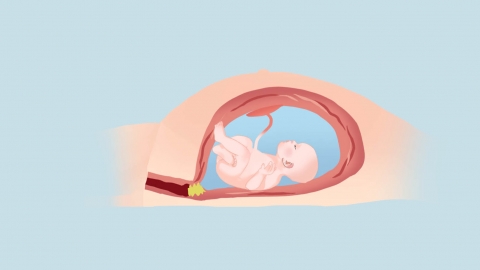What to do about malpresentation of the fetus
Abnormal fetal position may be caused by pathological factors such as pelvic stenosis or abnormalities, short umbilical cord, polyhydramnios, multiple pregnancies, or uterine malformations. Treatment methods include postural adjustments, appropriate exercise, medication, and surgical interventions. The appropriate approach should be selected based on individual circumstances and performed under a doctor's guidance. If abnormalities or symptoms persist or worsen, prompt medical attention is advised. Detailed explanations are as follows:

1. Pelvic Stenosis or Abnormalities: If a pregnant woman's pelvic structure is narrow or abnormal, it may restrict the fetus's movement space within the uterus, preventing the fetus from adjusting to the normal position, thus causing abnormal fetal position. Pregnant women are advised, under medical guidance, to attempt fetal position correction through postural adjustments such as the knee-chest position or bridge position. They should also avoid strenuous activities to prevent worsening of the abnormal fetal position.
2. Short Umbilical Cord: The umbilical cord connects the fetus and placenta. If it is too short, it may restrict fetal movement within the uterus, leading to abnormal fetal position. Pregnant women with a short umbilical cord should undergo regular prenatal checkups and closely monitor fetal conditions. If the fetal position is abnormal and cannot be corrected through postural adjustments or similar methods, cesarean section or other surgical delivery methods may be considered.
3. Polyhydramnios: Amniotic fluid fills the amniotic cavity and serves to protect and cushion the fetus. Excessive amniotic fluid may allow excessive fetal movement within the uterus, resulting in abnormal fetal position. Polyhydramnios may be accompanied by symptoms such as abdominal distension, difficulty moving, and shortness of breath in the pregnant woman. Adjusting diet and engaging in appropriate exercise may help reduce amniotic fluid volume and improve fetal positioning.
4. Multiple Pregnancies: Multiple pregnancies refer to the presence of two or more fetuses in the uterine cavity during a single pregnancy. Due to the relatively limited space in the uterus during multiple pregnancies, interactions between fetuses may increase the risk of abnormal fetal position. Multiple pregnancies may be accompanied by symptoms such as abdominal enlargement, shortness of breath, and preterm labor in the pregnant woman. It is recommended that pregnant women undergo regular prenatal examinations, engage in appropriate exercise, and consider medication therapy to monitor fetal conditions and improve fetal positioning. If the fetal position remains abnormal and cannot be corrected, cesarean section or other surgical delivery methods may be considered.
5. Uterine Malformations: Uterine malformations refer to abnormalities in the shape and structure of the uterus, such as unicornuate uterus or bicornuate uterus. These abnormalities may affect fetal movement and positioning within the uterus, leading to abnormal fetal position. Uterine malformations may be accompanied by symptoms such as menstrual irregularities and miscarriage. Pregnant women with uterine malformations should choose appropriate treatment plans based on their specific conditions, such as surgical correction or conservative management.
In daily life, pregnant women should maintain a healthy lifestyle, including a balanced diet, appropriate exercise, and a positive mindset, to enhance physical health and immunity and reduce the risk of illness.





